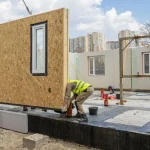Simple Steps to Sustainable Living: Embrace Eco-Friendly Practices
Embrace Eco-Friendly Living: A Beginner’s Guide to Sustainable Home Practices
Now, more than ever, it is crucial for us to prioritize sustainable living practices in our daily lives. As the world battles the effects of climate change, each individual has a role to play in ensuring a greener, healthier future. One effective way to make a positive impact is by embracing eco-friendly living practices within our homes. In this beginner’s guide, we will explore simple yet impactful ways to make your home more sustainable. Get ready to take the first step towards a greener lifestyle.
Understanding the Importance of Sustainable Home Practices
Before diving into the specific practices, it is important to understand why sustainable home practices are essential for a better future. By adopting eco-friendly habits within our homes, we reduce our carbon footprint, conserve natural resources, and contribute to a healthier environment for ourselves and future generations. Sustainable home practices also have the potential to save money in the long run by reducing energy and water consumption.
Simple Steps to Reduce Energy Consumption
Reducing energy consumption is a major step towards a more sustainable home. Start by replacing traditional incandescent light bulbs with energy-efficient LED bulbs. These bulbs consume less energy and have a longer lifespan. Another simple yet effective way to save energy is by unplugging electronics when they are not in use. Many devices continue to draw power even when turned off, contributing to unnecessary energy waste.
Conserving Water: A Key Aspect of Eco-Friendly Living
Conserving water is crucial for sustainable living. Start by fixing any leaks in your faucets or toilets, as even small drips can add up to significant water waste over time. Install low-flow showerheads and faucets, which reduce water usage without compromising on performance. Additionally, consider collecting rainwater to use for outdoor watering or flushing toilets.
Choosing Sustainable Building Materials for Your Home
When building or renovating your home, opt for sustainable building materials. Look for products made from renewable resources, such as bamboo flooring or reclaimed wood. Choose insulation materials that are environmentally friendly and energy-efficient. By selecting sustainable building materials, you contribute to the reduction of carbon emissions and promote a healthier indoor environment.
The Benefits of Recycling and Waste Management
Implementing proper recycling and waste management practices in your home is crucial for a sustainable future. Separate your waste into recyclables, organic waste, and non-recyclables. Educate yourself about your local recycling programs and guidelines to ensure you are recycling correctly. Compost your organic waste to reduce landfill waste and create nutrient-rich soil for your garden.
Creating a Compost System for Organic Waste
Composting is an excellent way to dispose of your organic waste while creating nutrient-rich soil for your plants. Start by designating a compost area in your garden or use a compost bin. Add kitchen scraps, such as fruit and vegetable peels, coffee grounds, and eggshells. Combine them with yard waste, such as leaves and grass clippings. Remember to turn the compost regularly to speed up the decomposition process.
Improving Indoor Air Quality with Natural Ventilation
Indoor air quality is essential for a healthy home environment. Improve air circulation by opening windows and doors to allow fresh air to flow in. Use natural ventilation methods, such as installing window vents or utilizing ceiling fans. Avoid using chemical-based air fresheners and instead opt for natural alternatives, such as essential oil diffusers or indoor plants that help purify the air.
Energy-Efficient Lighting: Illuminating Responsibly
Lighting consumes a significant amount of energy in our homes. Switching to energy-efficient lighting options, such as LED or CFL bulbs, can help reduce energy consumption while providing the same level of brightness. Consider installing motion sensor or timer switches to ensure lights are not left on unnecessarily. Also, make the most of natural daylight by opening curtains and blinds during the day.
Harnessing Solar Power for a Sustainable Home
Solar power is a sustainable and renewable energy source that can significantly reduce your carbon footprint. Consider installing solar panels on your roof to generate clean electricity for your home. While the upfront cost may be high, you will save money in the long run by reducing your reliance on fossil fuels and potentially even selling excess energy back to the grid.
Embracing Green Transportation Options
Transportation is a major contributor to carbon emissions. Reduce your carbon footprint by embracing green transportation options. Consider walking, biking, or using public transportation whenever possible. If you need a car, opt for electric or hybrid vehicles that produce fewer emissions. Carpooling with friends or coworkers is another way to reduce your impact on the environment.
The Role of Sustainable Landscaping in Eco-Friendly Homes
Sustainable landscaping practices can enhance the environmental sustainability of your home. Choose native plants that require less water, fertilizer, and pesticides. Install a rainwater harvesting system to water your garden. Create designated areas for composting and recycling within your outdoor space. By incorporating sustainable landscaping practices, you can create a beautiful and eco-friendly outdoor environment.
Optimizing Insulation for Energy Efficiency
Proper insulation is crucial for energy efficiency in your home. Insulate your walls, attic, and floors to reduce heat transfer and keep your home comfortable all year round. Look for insulation materials with high R-values, which indicate better thermal resistance. Additionally, seal any gaps or cracks in your windows or doors to prevent drafts and energy loss.
Eco-Friendly Home Cleaning Products: A Safe Alternative
Traditional cleaning products often contain harmful chemicals that can negatively impact both our health and the environment. Switch to eco-friendly cleaning products that are non-toxic, biodegradable, and derived from renewable resources. Use natural alternatives such as vinegar, baking soda, and lemon for everyday cleaning tasks. Not only are these alternatives safer, but they are also more cost-effective.
Integrating Smart Home Technology for Sustainability
Smart home technology allows you to monitor and control your home’s energy consumption more efficiently. Install smart thermostats that automatically adjust temperature settings based on occupancy and time of day. Use smart power strips to eliminate standby power, ensuring that electronics are not wasting energy when not in use. Additionally, install smart lighting systems that can be controlled remotely or programmed to turn off when not needed.
Supporting Local and Sustainable Food Sources
Supporting local and sustainable food sources is an impactful way to reduce your carbon footprint and promote a healthier food system. Shop at local farmers’ markets and buy organic, seasonal produce whenever possible. Consider starting a vegetable garden in your backyard or participating in a community garden. Reduce food waste by planning meals, storing food properly, and composting any scraps or leftovers.
Educating and Engaging Children in Sustainable Practices
Instilling sustainable practices in children from a young age is essential for creating a sustainable future. Educate and engage children in sustainable practices through fun activities and educational resources. Teach them about recycling, energy conservation, and the importance of preserving nature. Encourage them to participate in gardening, composting, and other eco-friendly projects. By involving children, you foster a sense of responsibility and a deeper understanding of the environment.
Conclusion
Eco-friendly living practices in our homes are paramount to mitigating the effects of climate change and building a sustainable future. By understanding the importance of sustainable home practices and implementing small changes in our daily lives, we can make a significant impact. From reducing energy consumption and conserving water to choosing sustainable materials and embracing green transportation options, each step we take contributes to a greener and healthier planet. Let us all commit to sustainable home practices and inspire others to do the same.





